![Image of Plazoom]()
By Plazoom
Last updated 08 October 2025
Using Remembrance Day activities in your classroom gives pupils a meaningful way to connect with history, reflect on the sacrifices of others and understand the human stories behind conflict.
While it can be a sensitive topic, these age-appropriate activities – from creating poppies in EYFS to reading World War One poetry in KS2 – help children engage thoughtfully, develop empathy and appreciate the importance of remembering.
What is Remembrance Day?
Remembrance Day takes place each year on 11th November. It marks the end of the First World War in 1918 and honours all those who have served and lost their lives in conflict since then.
In schools, it provides a chance to explore history, discuss feelings and values and connect children’s understanding of the past with their reflections on peace today.
Why do we wear poppies?
The poppy has become the lasting symbol of remembrance, inspired by the poem In Flanders Fields. Wearing a poppy helps us remember the sacrifices made by others and think about the importance of working towards peace.
EYFS Remembrance Day activities
Remembrance Day can be introduced gently in the early years, helping young learners explore ideas of memory, kindness and saying thank you.
Our free EYFS Remembrance Day resource pack helps young learners explore the meaning of Remembrance Day through the symbol of the red poppy. It supports fine motor skills and early understanding of the past.
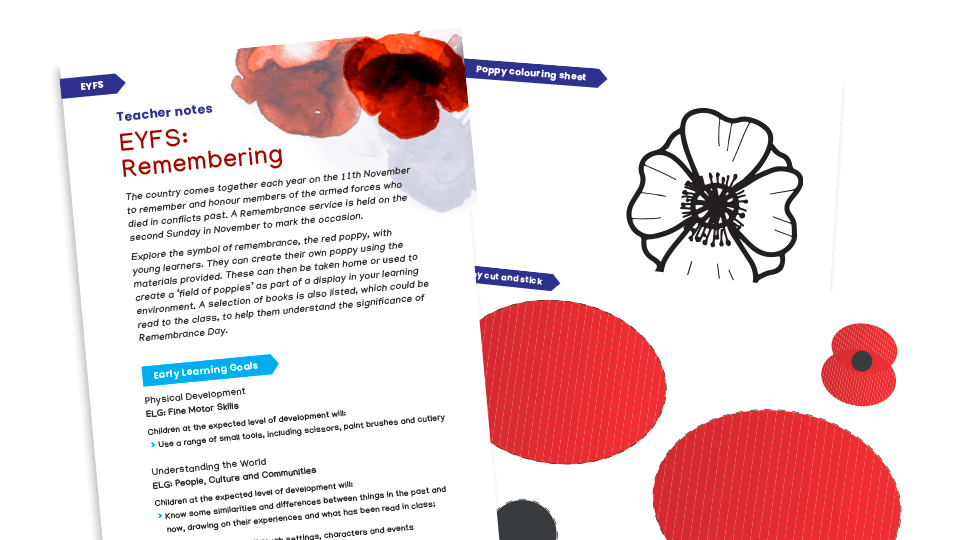
KS1 Remembrance Day activities
For younger primary pupils, Remembrance Day offers a chance to learn why and who we remember and how we show respect.
Our 'Why do we remember?' KS1 resource helps pupils understand the significance of Remembrance Day and the poppy as a symbol of remembrance.
Through discussion, creating poppies and simple writing tasks, children will reflect on who and what poppies help us to remember. They'll also develop their vocabulary, sentence composition skills and their understanding of real events.

Lower KS2 Remembrance Day activities
As children’s understanding deepens, you can begin to introduce more historical detail and explore how remembrance is marked across the UK.
This Year 4 reading comprehension unit explores The National Memorial Arboretum, helping pupils understand its history and purpose.
Through annotated texts, discussion prompts, vocabulary lessons and comprehension worksheets, children will develop key reading skills. They'll also learn to express personal opinions and reflect on the significance of remembrance.
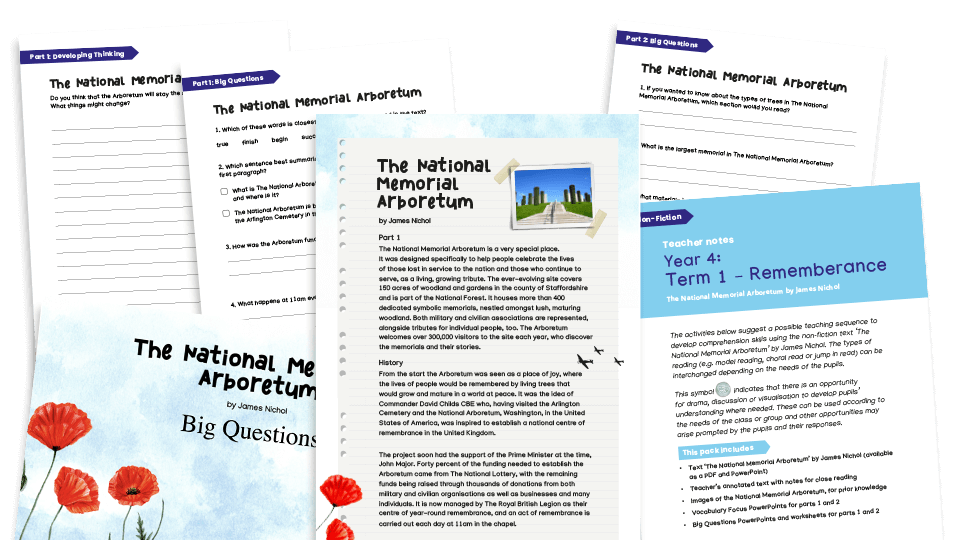
Meanwhile, this Year 4 reading comprehension unit uses The Letter to engage pupils with the theme of remembrance. This is an original fiction text from the perspective of a young WWI soldier.
Through layered reading, vocabulary exploration, discussion and writing tasks, children will develop comprehension skills, empathy and historical understanding while responding thoughtfully to the text.
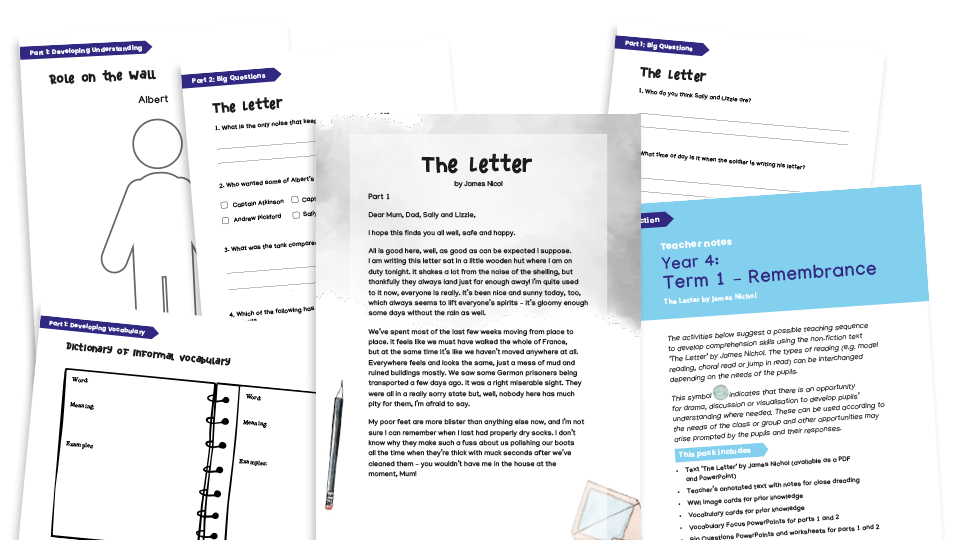
Upper KS2 Remembrance Day activities
Older pupils can engage with the emotions, imagery and language of remembrance through poetry, letters and historical context.
This KS2 resource explores life on the WWI frontline. It helps pupils understand the significance of Remembrance Day and the poppy as a symbol.
Using images, letters and writing tasks in role, children will develop inference skills, historical understanding and the ability to describe characters and settings thoughtfully.
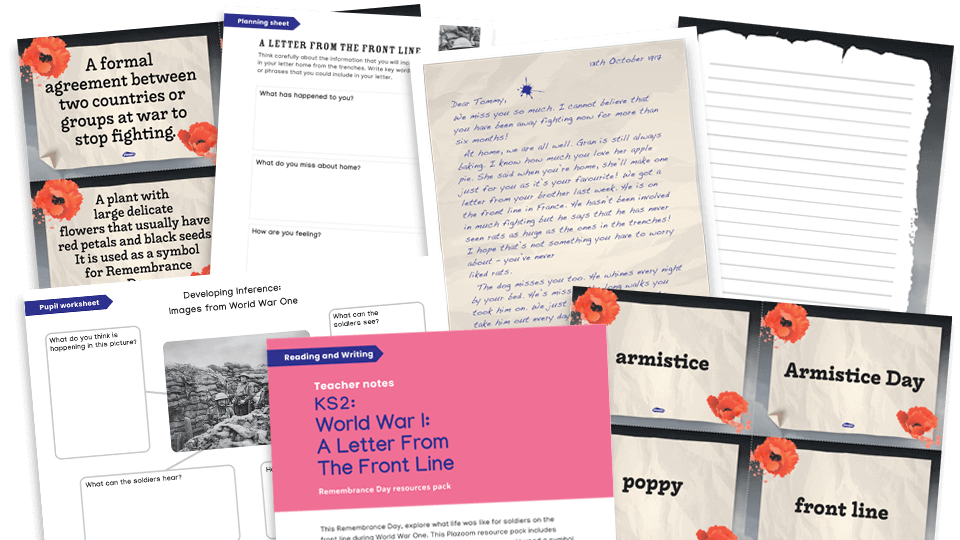
Meanwhile, this Year 6 resource uses Wilfred Owen’s Dulce et Decorum Est to help pupils explore life in the WWI trenches and the significance of Remembrance Day.
Through discussion, vocabulary analysis and narrative writing inspired by the poem, pupils will develop their reading, writing and historical understanding. They'll also reflect on human experiences of war.
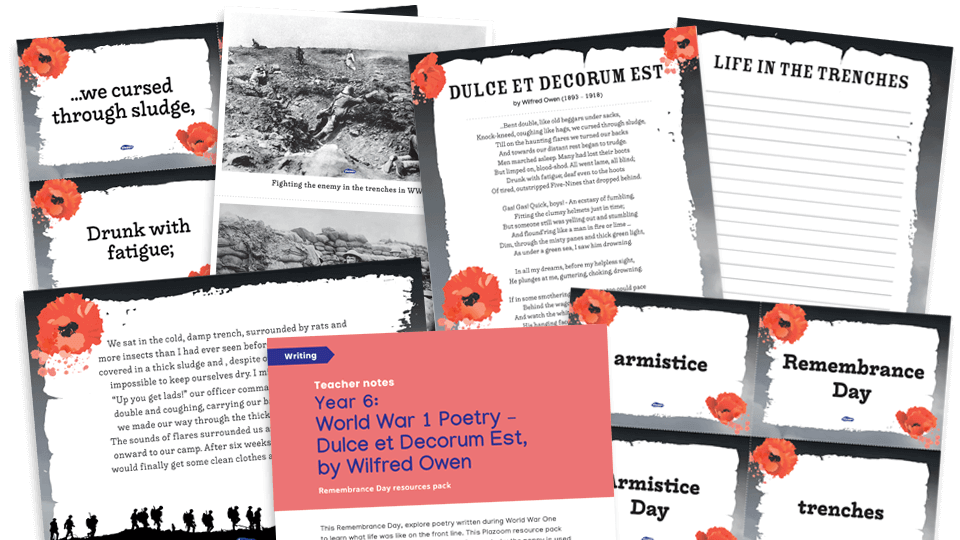
Finally, this free KS2/3 Remembrance Day assembly resource over at Teachwire uses the story of Willie McBride and the song The Green Fields of France to reflect on the human cost of WWI.
It encourages pupils to think critically about the consequences of war, the importance of peace and the lessons we can learn from history.